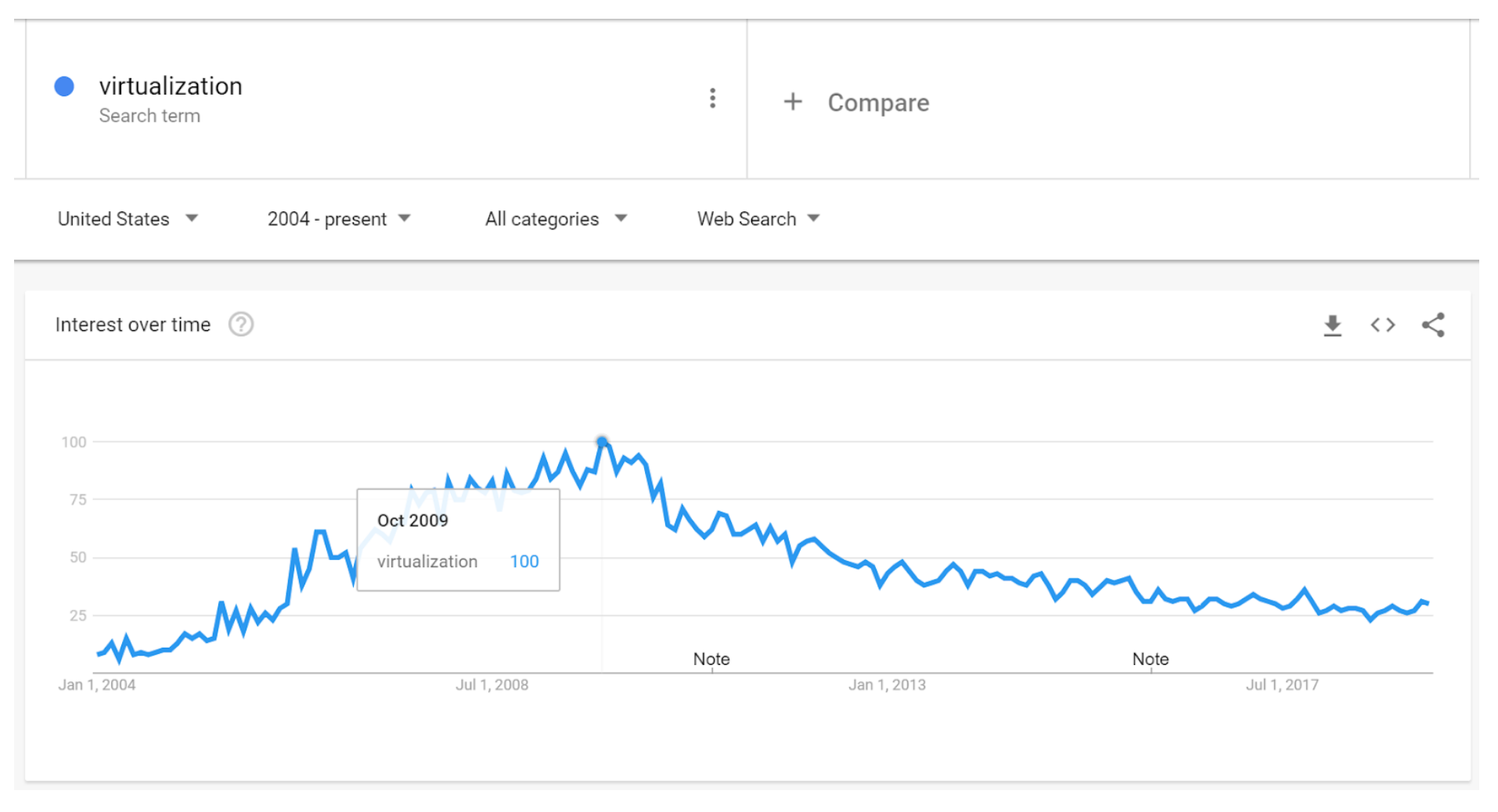What is Virtualization and how relevant is this technology approach today?
Virtualization, a term you could not avoid in IT just a few years back, drove a fundamental shift in the IT industry that ultimately changed the way most business deliver or consume IT today. But if you work in IT marketing these days or have just joined the ranks of IT professionals, you will hear buzzwords like “cloud-first”, micro-services, containers or analytics and artificial intelligence instead. So is Virtualization “dead”?
What is Virtualization?
You will find various definitions of Virtualization but in a simplified view it describes an “abstraction layer” that allows you to see/access/consume IT resources in a “different” way than they naturally appear. This concept has been around in IT for ages, just think of simple “disk RAID” where we “consume” a collection of disks like if it was a single one that is inherently fault tolerant, simply by viewing it through a RAID adapter that abstracts the underlying components into a virtualized disk (LUN).
The rise of companies like VMware and various open source projects (Xen, KVM) drove the widespread adoption of virtualization of x86 server hardware, where this abstraction layer is typically referred to as the “hypervisor”. The benefits of this approach allowed the consolidation of underutilized hardware onto “fewer”, “cheaper” and “better” systems as well as the easier automation and orchestration of virtualized resources compared to “native” ones, giving us (still fascinating) technologies like “live migration” of workloads between systems.
But is that all?
With server virtualization providing significant benefits, similar concepts have since been applied to “any” layer in IT. You might not always recognise them at first glance (they might be called “software-defined” or something else) but while there are indeed differences, the basic idea remains the same – an abstracted view of the underlying physical resources that allows you to consume the (now virtualized) resource in an easier/cheaper/better way. Whether you look at network virtualization approaches with products like VMware NSX or Cisco ACI, next generation storage virtualization through hyperconverged approaches, you will find virtualization everywhere.
So is Virtualization still relevant?

Without virtualization most of the new buzzwords would not even be around. The needed efficiency and automation levels to make “public cloud” viable would have essentially been impossible without virtualization and even some of the latest buzzwords like “containerisation” are really just another name for a form of “abstraction” of the underlying server hardware.
While we want to bring across that the general approach of “abstraction” is indeed common across these approaches, we don’t want to belittle the differences. For an architect it is absolutely imperative to understand the various functional and operational characteristics that can be achieved with each “form” of abstraction.
So while virtual machines and containers might seem and act in many ways “similar”, the fact that the abstraction provides fully replicated OS instances in one model, while using a single shared OS instance in the other results in fundamentally different use cases and sometimes “religious” discussions with fellow colleagues.
Keep an eye on it!
So whatever your view on “virtualization”, it is often better considered an “IT concept” rather than a technology, it is deeply ingrained and will remain everywhere in IT. If anything it is more prevalent now than it was at its height of popularity (see search term popularity below) and it is being diversified and evolved for many different use cases. If you are “in IT” you are well advised to keep a close eye on anything “virtual” – whatever name it bears.
What does WhatMatrix do with virtualization?
As community we give free comparison of virtualization platforms and other IT related comparisons. Our virtualization software comparison allows you to compare the leading solutions by use case and identify the best platform for your use case.




